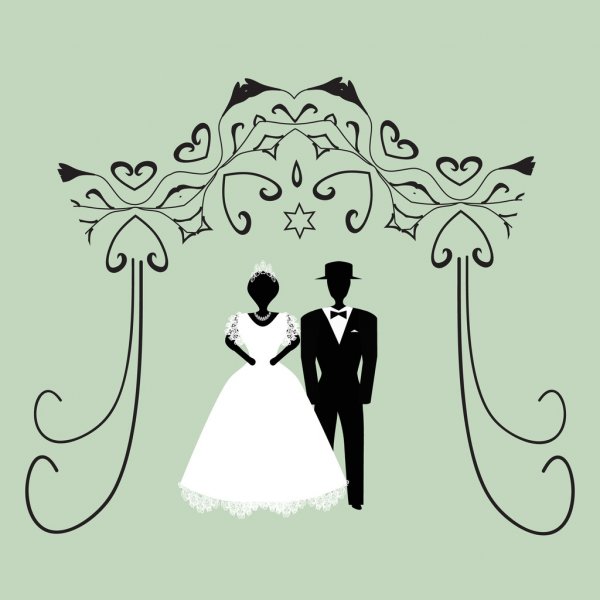Fewer American Jews are marrying these days, and among those who do, barely 40 percent do so with Jewish spouses. The new Pew Research survey finds that, overall, 56% of married Jews have a Jewish spouse, while 44% of Jewish are married to a non-Jew. Among Jews by religion who are married, 64% have a Jewish spouse and 36% have a non-Jewish spouse. By comparison, Jews of no religion are much more likely to be in mixed marriages; just 21% of married Jews of no religion are married to a Jewish spouse, while 79% are married to a non-Jewish spouse.
The study, published by the Jerusalem-based Jewish People Policy Institute, found that only 50 percent of American Jews aged 25-54 (not including the ultra-Orthodox, or Haredi Jews) are currently married. Among those, close to 60 percent married non-Jews.
The study was conducted by two leading scholars of American Jewry: Sylvia Barack Fishman of Brandeis University and Steven M. Cohen of Hebrew Union College. It analyzes data published in the landmark 2013 survey of American Jewry published by the Pew Research Institute. Within this group of non-Haredi Jewish-American adults, the study found the majority (60 percent) had no children living at home and that barely one-third (32 percent) were raising their children Jewish in some way or another.
The authors note that marriage rates among American Jews have been declining for many years. In the 1960s and 1970s, for example, according to various studies conducted by the greater Boston Jewish community and cited in the JPPI report, almost 90 percent of young Jews in their thirties were married. Today, by contrast, a majority of young American Jews aged 25-to-34 (the age groups do not entirely overlap) – anywhere from 53 percent to 69 percent are not married and never have been. Among American Jews aged 35-to-44 – the peak period of marriage – barely 70 percent are married today.
A report released several years ago in the United States noted that contrary to the conventional wisdom, intermarriage was not necessarily harming the Jewish community. Published by Leonard Saxe and Theodore Sasson, it found high rates of Jewish identification among young adult children of mixed marriages.
This new report, however, reaches a much different conclusion. “Simply put, hardly any children (17 percent) of mixed marriages marry Jews and an almost equally small number (21 percent) raise their children as Jews,”
Like previous studies of its kind, the JPPI report found that children who attend Jewish day school and Jewish summer camps are far more likely to marry other Jews. It also found that couples who raise their children Jewish – especially those who embrace Jewish religious practices at home – are far more likely to be active in their respective Jewish communities.
In conclusion, In more recent times, rates of intermarriage have increased generally; for example, the US National Jewish Population Survey 2000-01 reports that, in the United States of America between 1996 and 2001, nearly half (47%) of Jews who had married during that time period had married non-Jewish partners. The 1990 National Jewish Population Survey reported an intermarriage rate of 52 percent among American Jews. The possibility that this might lead to the gradual dying out of Judaism is regarded by most Jewish leaders, regardless of denomination, as precipitating a crisis. For this reason, as early as the mid 19th century, some senior Jewish leaders denounced intermarriage as a danger to the continued existence of Judaism.
